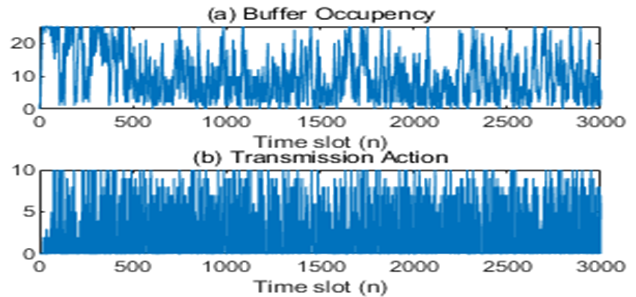


Indian Journal of Science and Technology
Year: 2020, Volume: 13, Issue: 41, Pages: 4332-4350
Original Article
K Shashi Raj1∗, G K Siddesh2 , S Mallikarjunaswamy2 , K Vivek Raj3
1 Department of Electronics and Communication Engineering, Dayananda Sagar College of Engineering, Bengaluru, 560078, Karnataka, India
2 Department of Electronics and Communication Engineering, JSS Academy of Technical Education, Bengaluru, 560060, Karnataka, India
3 Department of Telecommunication Engineering, Dayananda Sagar College of Engineering, Bengaluru, 560078, Karnataka, India
Corresponding author:
[email protected]
Received Date:21 May 2020, Accepted Date:30 June 2020, Published Date:03 December 2020
Background/Objectives: Being dynamic in nature, Mobile Ad-hoc Network (MANET) requires robust resource allocation strategy that can ensure both optimal transmission reliability and resource efficiency to meet Quality of Service (QoS) demands. The objective of this research is to address interference resilience requirement in MANETs which is must due to greedy nature of nodes especially when accessing resource or bandwidth and develop a highly robust stochastic prediction based resource allocation strategy. Methods: The proposed Interference Resilient Stochastic Prediction based Dynamic Resource Allocation model for Cognitive MANET (ISP-DRACM) intends to enable optimal resource allocation under interweave and underlay network setup with instantaneous as well as average interference conditions. It employs a joint power management and resource allocation strategy where it intends to maximize the weighted sum-rate of the secondary users under certain defined conditions like average power and stochastic interference level. Findings/Novelty: Inculcating resource allocation problem as controlled Markov Decision Process using Hidden Markov Model (HMM) and Lagrange relaxation, our proposed model achieves better resource allocation under limited noise or interference condition and hence achieves both costeffectiveness as well as QoS provision. This method has exhibited satisfactory performance towards spectrum allocation to the secondary users without imposing any significant interference for both interweave as well as underlay Cognitive Radio setup.
Keywords: Cognitive mobile ad-hoc network; stochastic prediction; interference resilience; channel state information; dynamic resource allocation; underlay and overlay cognitive MANET
© 2020 Shashi Raj et al. This is an open-access article distributed under the terms of the Creative Commons Attribution License, which permits unrestricted use, distribution, and reproduction in any medium, provided the original author and source are credited. Published By Indian Society for Education and Environment (iSee).
Subscribe now for latest articles and news.